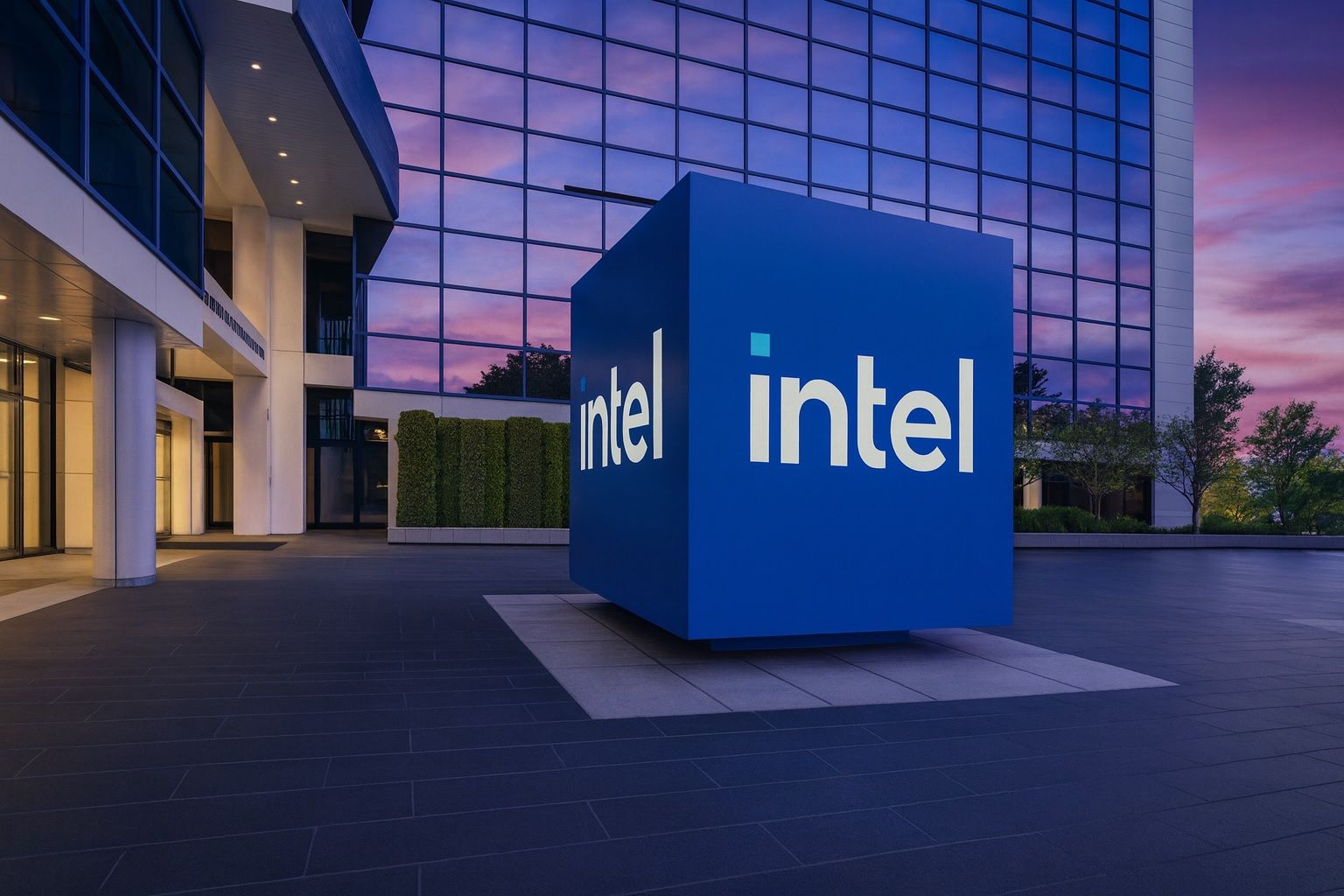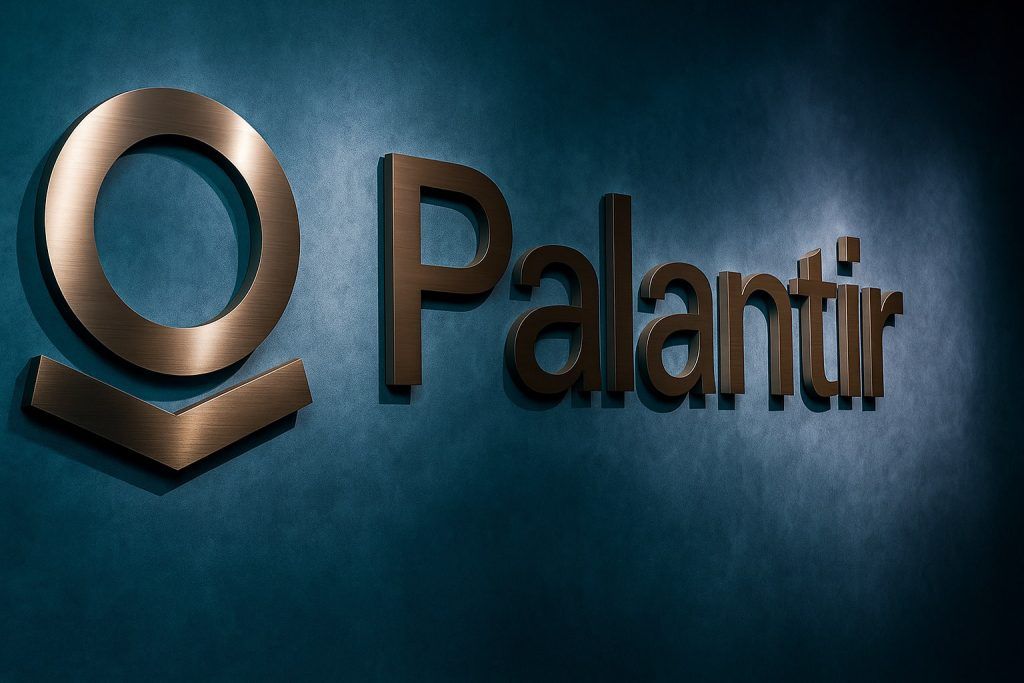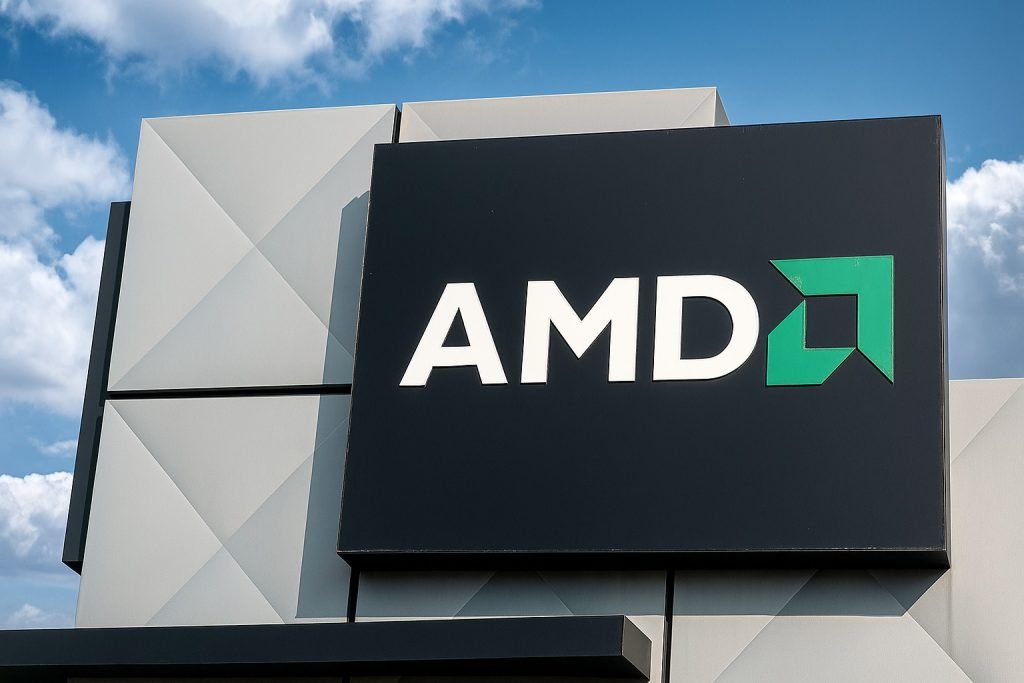Intel stock (NASDAQ: INTC) is under pressure today, giving back part of its huge 2025 rally as a fresh analyst note from Citi casts doubt on the company’s foundry ambitions, even while AI-related catalysts and Nvidia’s blockbuster earnings keep the long‑term narrative alive.
As of early afternoon on November 20, 2025, Intel shares are trading around $34–$34.50, down roughly 2–3% on the day, after opening near $36 and swinging between an intraday high around $36.6 and lows just above $34. That’s a sharp reversal from recent strength — but even after today’s pullback, Intel remains up roughly three‑quarters year‑to‑date in 2025, according to a new Trefis/Forbes analysis. [1]
Below is a breakdown of the key Intel stock news for November 20, 2025, and what it may mean for investors.
1. Intel stock today: volatile session after a massive 2025 rally
Intel is experiencing a high‑volatility session:
- Price (early afternoon, Nov. 20): about $34.2 per share
- Day change: roughly ‑2.6% vs. yesterday’s close near $35.1
- Intraday range: opened around $36, traded as high as ~$36.6 and as low as ~$34.0, a swing of more than 7% from high to low.
- Volume: already tens of millions of shares, above a typical day’s pace.
Despite today’s red ink, Intel has been one of 2025’s surprise comeback stories. A Forbes/Trefis piece published this morning notes that Intel shares have surged about 75% in 2025, driven not only by improving fundamentals but also by a significant re‑rating in the stock’s valuation multiple. [2]
In other words: today is a bad day in a very good year for INTC.
2. Citi questions Intel’s foundry – today’s main negative catalyst
The sharpest near‑term pressure on Intel today is coming from a new Citi research note that is circulating widely across financial newswires.
According to Reuters/Investing.com coverage, Citi reports that several major chipmakers — including Qualcomm, Broadcom and Apple — are actively evaluating Intel’s advanced packaging and foundry offerings, with job postings referencing Intel’s EMIB packaging technology. [3]
But Citi’s conclusion is notably skeptical:
- The bank argues that any work with Qualcomm, Apple or Broadcom is likely to be limited to packaging, which typically carries lower prices and margins than full wafer manufacturing. [4]
- Citi says these companies are probably diversifying packaging supply due to U.S. CHIPS Act incentives and bottlenecks at TSMC’s CoWoS packaging lines, rather than making a decisive strategic shift toward Intel. [5]
- The note cites industry feedback that Nvidia abandoned a packaging project with Intel because of technical issues, reinforcing concerns that Intel remains years behind TSMC in core manufacturing technology. [6]
- Bottom line: Citi reiterated a “Sell” rating on Intel, maintaining a cautious view on whether the foundry strategy will truly gain traction. [7]
For a stock that has ripped higher this year largely on turnaround hopes and foundry optimism, a high‑profile note saying “yes, customers are kicking the tires, but we still don’t believe in the economics” is a clear excuse for traders to lock in profits.
3. Nvidia’s record earnings: still a powerful but double‑edged catalyst
Intel isn’t trading in a vacuum today. The entire semiconductor complex is reacting to Nvidia’s latest blowout earnings, released last night.
Nvidia posted record quarterly revenue of about $57 billion, up more than 60% year‑over‑year, driven by insatiable demand for its Blackwell AI data‑center GPUs, according to a detailed WRAL/TokenRing report. [8] The results sent a fresh shockwave through global markets and sparked another round of debate over whether there is (or isn’t) an “AI bubble.” [9]
Early in the day, Nvidia’s numbers helped boost sentiment across AI‑linked chipmakers, including Intel, AMD and Micron, with one sector piece noting that U.S. chip stocks “surged” on the back of Nvidia’s strong Q3 report and upbeat AI outlook. [10]
But as the session wore on, that enthusiasm faded:
- Nvidia itself has given back part of its early gains, and sector ETFs are under pressure as traders reassess valuations after the initial euphoria. [11]
- Intel, which rallied into and immediately after Nvidia’s report earlier this week, is now seeing some of that AI‑beta unwind, especially with Citi adding a stock‑specific negative twist via its foundry skepticism.
So, Nvidia’s results are still net‑positive for Intel’s long‑term AI story, but today they’re not enough to offset a bearish analyst call in a market that’s suddenly in “sell the news” mode.
4. Company news today: AI PCs hit the football field at Arizona State
On the corporate news side, Intel’s own newsroom added a fresh storyline this morning that fits neatly into the AI narrative: AI PCs for college football.
Intel announced a collaboration with Arizona State University (ASU) football, making ASU the first Division I NCAA program to deploy a fleet of AI PCs as part of its 2025–26 season preparations. [12]
Key details from the announcement:
- ASU will deploy Lenovo ThinkPad X9-14 Gen 1 AI PCs, powered by the Intel vPro platform and Intel Core Ultra 200V series processors. [13]
- The goal is to use on‑device AI (via a built‑in neural processing unit, or NPU) for:
- Recruiting analytics and talent identification
- Game planning and operations – analyzing and visualizing data locally
- Digital media and fan engagement, including automated highlight creation and content workflows [14]
This initiative won’t move Intel’s revenue needle by itself, but it does support two important narratives:
- AI PC push – It showcases Intel’s belief that AI workloads will increasingly move onto PCs and laptops, not just live in the cloud.
- Ecosystem and branding – Partnering with a high‑profile program at “the nation’s most innovative university” helps Intel market AI PCs as real‑world tools rather than abstract technology. [15]
For investors, it’s a soft, brand‑building catalyst, not a hard financial one — but it reinforces Intel’s attempt to own the phrase “AI PC” as Microsoft and PC OEMs push AI features into mainstream laptops.
5. New way to buy Intel: BMO launches CDR with INTC exposure
Another news item today comes from Canada. Bank of Montreal (BMO) announced that new Canadian Depositary Receipts (CDRs) tied to major U.S. stocks, including Intel, have begun trading on the Cboe Canada exchange. [16]
The Intel‑linked product:
- Ticker: ZINT
- Underlying: Intel Corporation common shares
- Exchange: Cboe Canada
BMO notes that these CDRs trade in Canadian dollars and are designed to give local investors hedged, fractional, CAD‑denominated exposure to large U.S. companies, simplifying portfolio construction and currency management. [17]
Again, this doesn’t fundamentally change Intel’s business, but it widens the distribution of INTC exposure and can incrementally:
- Improve access and liquidity for Canadian retail investors
- Increase Intel’s presence in global diversification products
For an already widely held mega‑cap, the effect is modest — but for SEO and news readers, it’s another notable Intel headline dated November 20, 2025.
6. Big picture fundamentals: Intel’s turnaround story remains front and center
Today’s trading is happening against the backdrop of a major corporate turnaround that has reshaped how investors look at Intel in 2025.
Q3 2025: back to profit, with help from deals and subsidies
On October 23, 2025, Intel reported Q3 2025 results that beat expectations on both revenue and earnings: [18]
- Revenue: $13.7 billion, up 3% year‑over‑year
- GAAP EPS: $0.90; non‑GAAP EPS: $0.23 (vs. near‑breakeven expectations)
- Gross margin: improved into the high‑30s/around 40% range, a huge jump from the prior year
- Cash flow: roughly $2.5 billion from operations in the quarter
Several factors turbo‑charged confidence:
- A 10% equity stake by the U.S. government under the CHIPS and Science Act, alongside multi‑billion‑dollar investments by Nvidia and SoftBank, provided a significant capital and confidence boost. [19]
- Intel guided Q4 revenue to $12.8–$13.8 billion, with positive non‑GAAP EPS, signaling that the return to profitability isn’t just a one‑off. [20]
Several analyses (from outlets like Investopedia, the Financial Times and Tom’s Hardware) framed Q3 as a pivotal inflection point: Intel finally swung back to profit, dramatically improved margins, and showed that years of painful restructuring are starting to bear fruit — albeit with plenty of risk still attached. [21]
Foundry and 18A: the opportunity and the risk
Much of Intel’s 2025 story revolves around its IDM 2.0 / foundry strategy:
- Intel is pouring tens of billions into U.S. fabs (like Fab 52 in Arizona), positioning its Intel 18A process as an alternative to TSMC for cutting‑edge chips. [22]
- A MarketBeat‑syndicated article today highlights how TSMC’s AI‑driven capacity bottlenecks could make Intel “the biggest winner” of the supply crunch, especially given fresh funding from CHIPS subsidies plus investments from Nvidia and SoftBank that help de‑risk the capex load. [23]
- That same analysis notes that Intel still trades at a steep valuation discount to TSMC, with a much lower price‑to‑sales multiple, leaving room for upside if the foundry business starts to win major external customers. [24]
But not everyone is convinced. A recent Seeking Alpha piece titled “Is Intel’s Foundry Making Progress, Or Just More Intel Folly?” argues that Intel’s AI and foundry gains remain limited and that execution risk is high, making INTC a risky vehicle for pure AI exposure. [25]
Today’s Citi note very much aligns with that cautious camp, emphasizing:
- Technical and yield gaps versus TSMC
- The non‑trivial risk that Intel ends up stuck with high fixed costs and subscale foundry utilization
- The possibility that analyst consensus (often summarized as “Reduce” or equivalent) is more right than the recent bullish crowd. [26]
7. Why is Intel stock down today? A sentiment snapshot
MarketBeat’s “Why Is Intel Down Today?” dashboard pulls together many of the day’s headlines and offers a succinct sentiment breakdown: [27]
Positive themes:
- The Nvidia partnership and investment are seen as validation of Intel’s relevance in AI data centers and its foundry roadmap.
- The global AI chip shortage and capacity crunch create a structural opportunity for Intel’s U.S. fabs and advanced packaging, especially as customers and governments seek diversification away from single‑source suppliers. [28]
Neutral / mixed themes:
- New legislation like the STRIDE Act (H.R.6058), which aims to harden semiconductor supply chains and export controls, could help U.S. chipmakers long‑term but adds complexity. [29]
- Some brokers (such as Sanford C. Bernstein) are maintaining neutral views — neither fully bullish nor outright bearish. [30]
Negative themes:
- Analyst consensus remains cautious, clustering around neutral‑to‑underweight ratings even after Q3’s beat and the 2025 rally. [31]
- Competitors like AMD and ARM continue to chip away at CPU share, reminding investors that Intel’s turnaround is happening in a still‑hostile competitive landscape. [32]
Net‑net, the sentiment picture explains today’s price action:
Strong long‑term story + big year‑to‑date gains + fresh sell‑side skepticism = a down day for the stock.
8. What to watch next for Intel (INTC)
For readers following Intel through Google News or Discover, these are the key catalysts to monitor after today’s move:
- Foundry customer wins
- Any announcement of a large, high‑volume 18A foundry customer (especially if it’s a marquee name like Apple, Qualcomm, Broadcom or Nvidia) would be seen as a major validation of Intel’s manufacturing roadmap. [33]
- Follow‑through on Nvidia partnership
- More details on Nvidia–Intel integration, including how Intel CPUs and Nvidia GPUs will be combined in large AI data‑center deployments, will help investors judge whether this is a one‑off tie‑up or the start of a broader ecosystem shift. [34]
- 18A and packaging updates in upcoming events
- Future earnings calls and conferences (such as Intel’s recent presentation at a major global technology, internet, media and telecoms conference on Nov. 18) are likely to include updates on 18A yields, advanced packaging traction, and customer engagement. [35]
- Macro and AI‑cycle risk
- Intel is now heavily tethered to the AI infrastructure cycle. Any sign that AI capex is slowing — or that investors are souring on AI valuations more broadly — could have an outsized impact on INTC. [36]
- PC and AI PC adoption trends
- Corporate and consumer adoption of AI PCs (like those showcased in the ASU football partnership) will determine whether Intel can grow margins and revenue in its still‑critical Client Computing segment. [37]
9. Key takeaways for November 20, 2025
- Intel stock is down today after a strong year, trading around the mid‑$30s with a 2–3% intraday drop and a wide trading range. [38]
- A widely read Citi note arguing that Intel’s foundry opportunities remain limited and high‑risk is the main negative catalyst. [39]
- At the same time, AI tailwinds remain powerful: Nvidia’s record results and TSMC’s capacity bottlenecks highlight the structural demand that Intel is trying to capture with its 18A node and U.S. fabs. [40]
- Company‑specific news today — from AI PCs at Arizona State University to new BMO CDRs (ZINT) in Canada — reinforces Intel’s global brand and accessibility, even if they don’t immediately move the earnings needle. [41]
- The debate around Intel is still very much alive: bulls see a discounted turnaround story positioned to benefit from AI and supply‑chain reshoring; bears see a capital‑intensive foundry bet that is still fighting an uphill battle against TSMC, AMD and ARM. [42]
Important note
This article is for informational and educational purposes only and does not constitute financial, investment, or trading advice. Always do your own research and consider consulting a licensed financial adviser before making investment decisions.
References
1. www.forbes.com, 2. www.forbes.com, 3. www.investing.com, 4. www.investing.com, 5. www.investing.com, 6. www.investing.com, 7. www.investing.com, 8. markets.financialcontent.com, 9. seekingalpha.com, 10. somoshermanos.mx, 11. markets.financialcontent.com, 12. newsroom.intel.com, 13. newsroom.intel.com, 14. newsroom.intel.com, 15. newsroom.intel.com, 16. newsroom.bmo.com, 17. newsroom.bmo.com, 18. www.intc.com, 19. apnews.com, 20. www.intc.com, 21. www.investopedia.com, 22. www.intc.com, 23. finviz.com, 24. finviz.com, 25. seekingalpha.com, 26. www.investing.com, 27. www.marketbeat.com, 28. finviz.com, 29. www.marketbeat.com, 30. www.marketbeat.com, 31. www.marketbeat.com, 32. www.marketbeat.com, 33. finviz.com, 34. finviz.com, 35. seekingalpha.com, 36. markets.financialcontent.com, 37. newsroom.intel.com, 38. www.marketbeat.com, 39. www.investing.com, 40. markets.financialcontent.com, 41. newsroom.intel.com, 42. finviz.com







